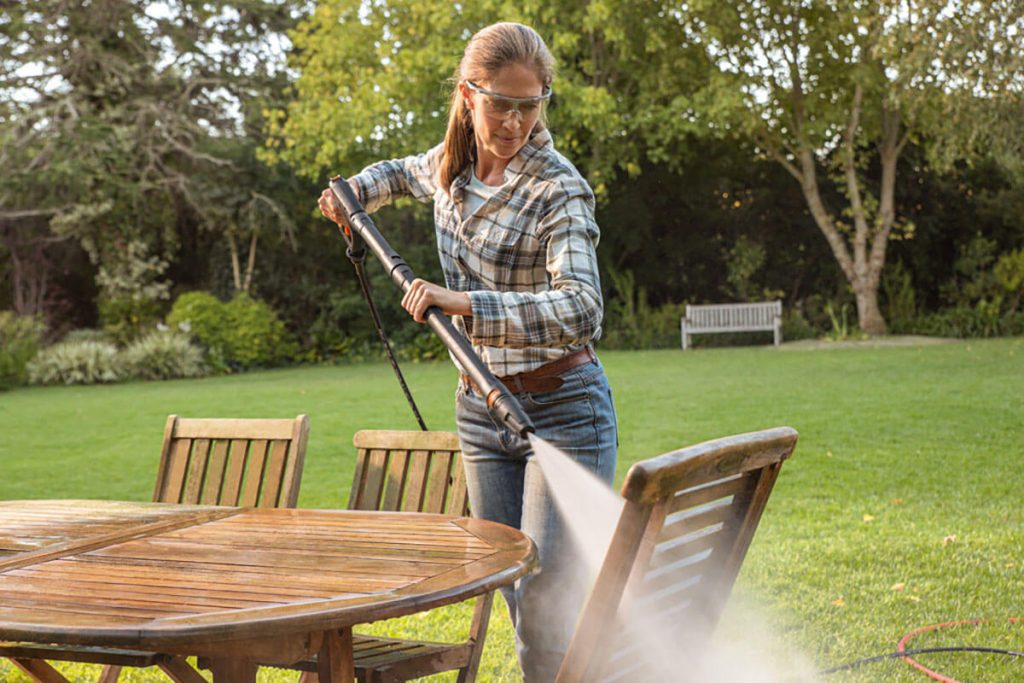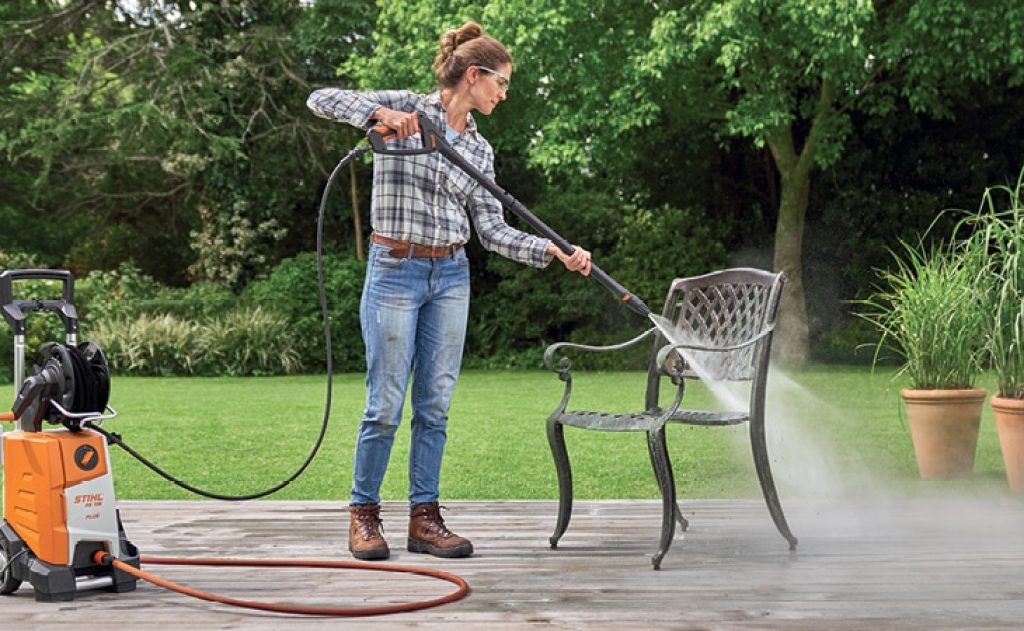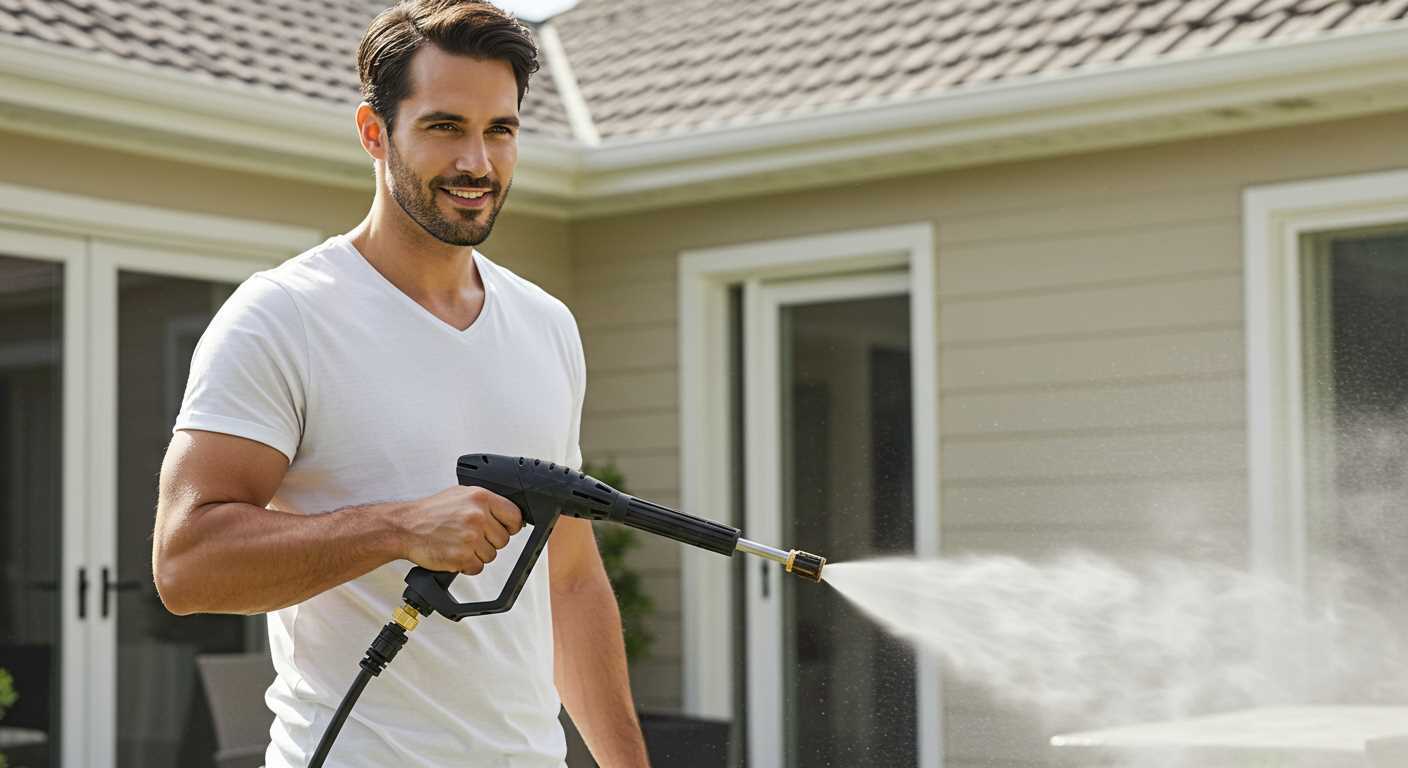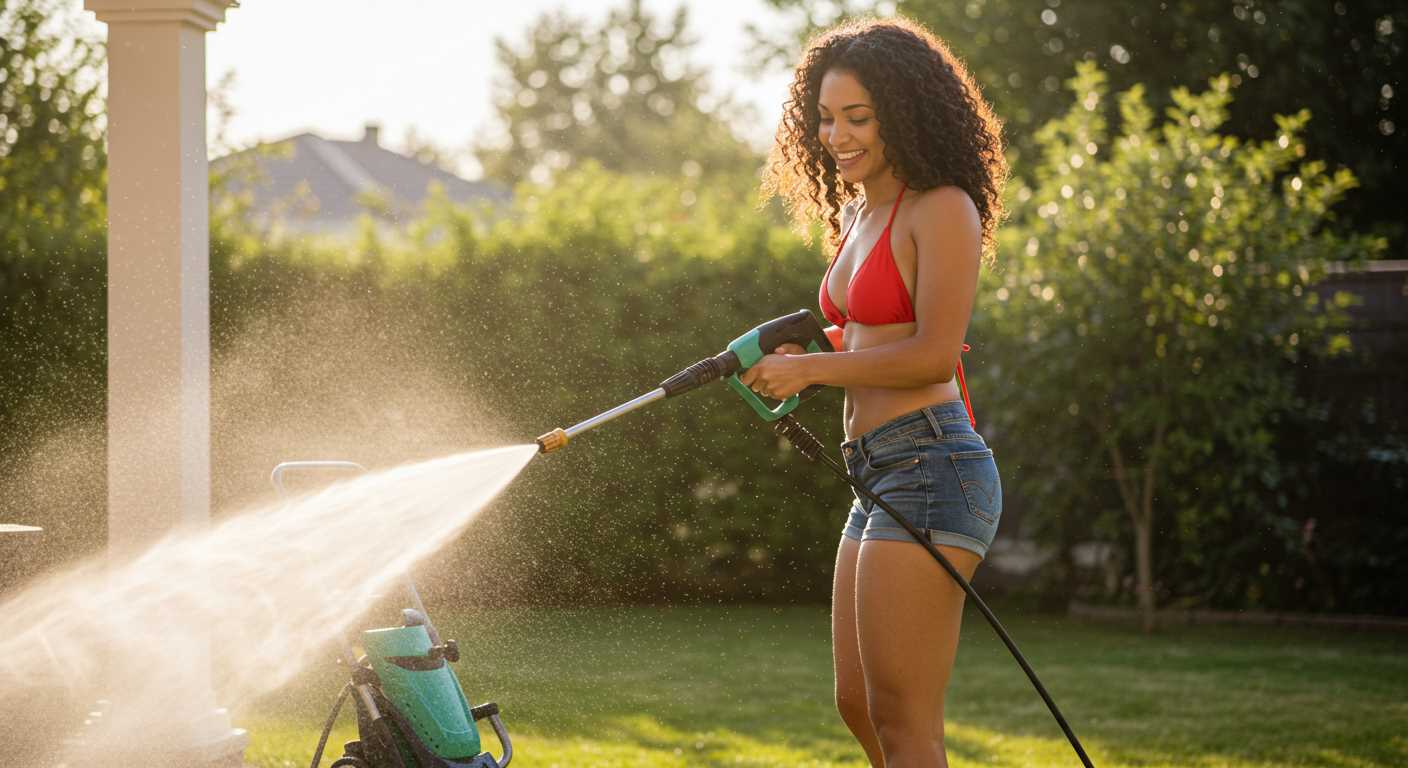


When cleaning garden furniture, a pressure washer can make the job easier. However, there are a few things to consider depending on the piece of furniture. This guide explains the best way to remove dirt from various surfaces.
How can garden furniture be cleaned with a pressure washer?
Dirt on garden furniture, for example from air pollution or from last winter, can be tackled with a pressure washer. Using a pressure washer saves time and water – while a garden hose with a pressure of 4 bar uses about 3,500 litres of water per hour, a pressure washer with 100 bar uses about 400 litres of water per hour.
Although different things, such as the pressure of the water jet, need to be taken into account when cleaning garden furniture surfaces made of different materials, the basic procedure for cleaning surfaces with a high-pressure cleaner is always the same:
- First remove the coarse dirt with the high-pressure jet.
- Dock the detergent bottle onto the pressure washer, put the suction hose into the bottle or the detergent into the tank.
- Apply water and detergent at low pressure and let the mixture work for a short time.
- Rinse off the detergent and the loosened dirt thoroughly with high pressure.
Cleaning wooden garden furniture

As with all wood that is exposed to wind and weather, garden furniture also develops a patina over time and turns grey or forms a green coating. You can remove these unpleasant coatings and other dirt with the water jet of a high-pressure cleaner. However, you should be careful with the pressure because wooden furniture is sensitive.
Therefore, set the pressure washer to low pressure and slowly approach the furniture with the water jet from a greater distance. This way you can find the optimal distance for effective cleaning without damaging the wood. Always clean in the direction of the wood grain and use special wood cleaner as a cleaning agent. The best attachments for cleaning wooden furniture are a flat-jet nozzle or a soft brush attachment.
To protect the wood, apply oil to the entire surface of the cleaned furniture after cleaning. However, you should wait until the furniture has dried, otherwise the damp wood under the oil may be damaged. Before applying the oil, it can also be advantageous to sand the furniture.
Cleaning garden furniture made of wickerwork or solid plastic

For garden furniture made of plastic, the ideal procedure depends on the type of furniture: while solid plastic is easy to care for and can be cleaned with higher pressure, you should be more careful with woven plastic. Use a special plastic cleaner and secure light furniture against tipping over while cleaning.
Clean the plastic furniture regularly, as especially light-coloured furniture can otherwise become permanently discoloured by rainwater and pollen. Dark furniture, on the other hand, can fade if it is exposed to constant sunlight – however, this discolouration cannot be remedied by regular cleaning, but only by a sunshade or similar shady location.
Cleaning metal garden furniture
The most common materials for metal garden furniture are aluminium, hot-dip galvanised steel and cast iron.
Aluminium is particularly light and should therefore also be secured against falling over due to the pressure of the equipment. The metal is also comparatively soft, so you should refrain from using abrasive cleaning agents. These can scratch the surface. Smaller scratches can be repaired with spray paint.
With cast iron or steel, on the other hand, you can use high pressure and a dirt cutter. Rust and stubborn dirt often form on the rough surface of cast iron. You can paint over chipped paint after cleaning. If there is more damage to the paint or rust, it is a good idea to first sand the areas and then repaint them with a protective metal lacquer. You can achieve an additional protective layer against renewed rusting by first applying a primer.
After cleaning with a pressure washer and a mild detergent, it is advisable to dry the metal furniture thoroughly with a cloth.


